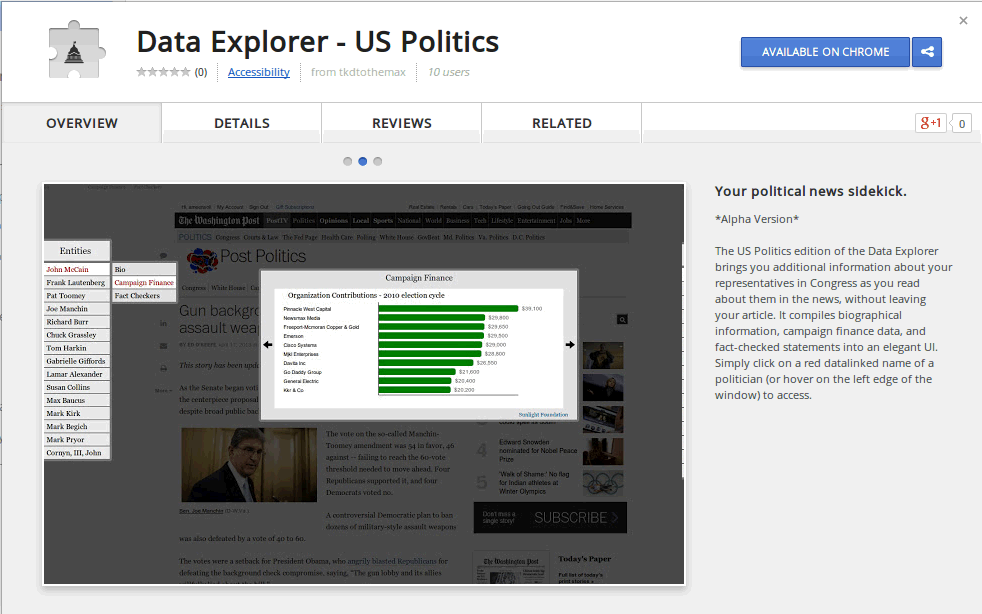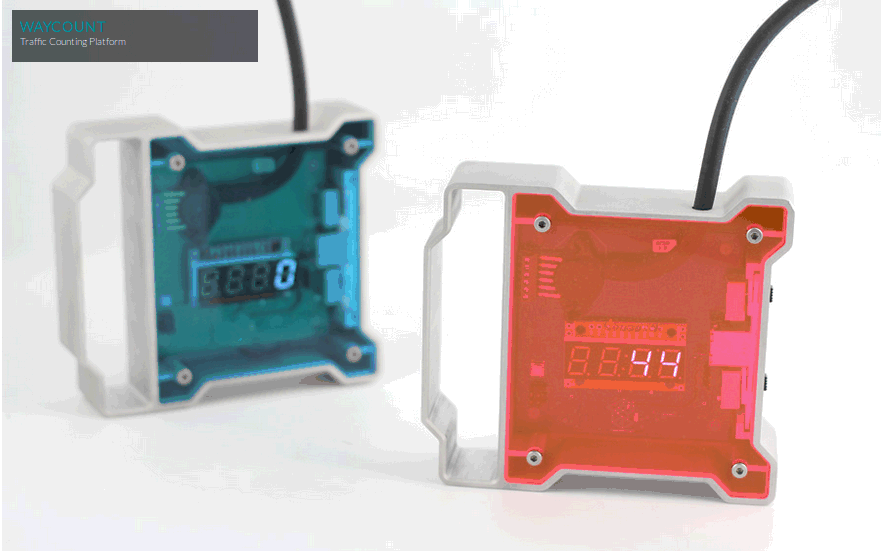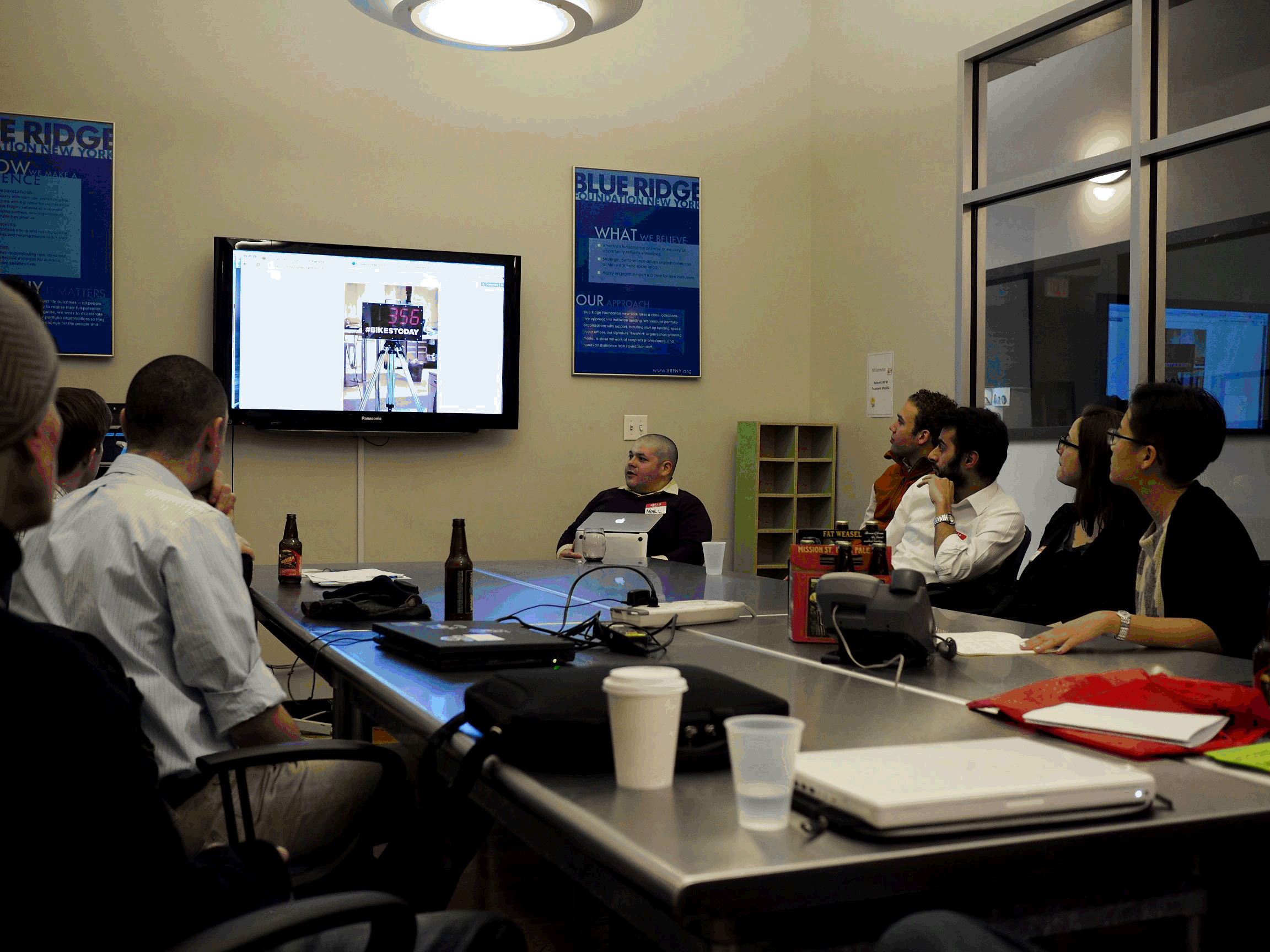- From: Christophe Guéret <christophe.gueret@dans.knaw.nl>
- Date: Mon, 10 Mar 2014 10:54:14 +0100
- To: Ig Ibert Bittencourt <ig.ibert@gmail.com>
- CC: Steven Adler <adler1@us.ibm.com>, Public DWBP WG <public-dwbp-wg@w3.org>
- Message-ID: <CABP9CAGTQQ3Ta+w9ov9Rm0+5tiaFbuntLF1zHAcMU3ch9gj-qQ@mail.gmail.com>
Hoi, > Don't you think we should create some use cases focused on the usage of > PROV-O, QB, DCAT, ORG... ? > This sounds a bit awkward to me. I would have expected that the usage of the vocabulary would be derived from the use-cases, and not the inverse. If we make up use-cases to the aim of illustrating some best practices these BP may be disconnected from the concrete happenings... Rather, if we would like an existing use-case to use some vocabulary instead of something of their own we can suggest this change and try to get it implemented, and/or understand why this situation exists. Cheers, Christophe > > Best, > Ig > > > 2014-03-06 12:51 GMT-03:00 Steven Adler <adler1@us.ibm.com>: > > Last night, I attended another BetaNYC Hackathon in Brooklyn, where I met >> another group of passionate citizens developing, and learning to develop, >> fascinating apps for Smarter Cities. This week we were about 15 people in >> the room, and we started with a lightning round of "what are you working >> on" descriptions from project leads. There were only three people in the >> room who had participated in the hackathon the week prior, and this is >> pretty normal. BetaNYC has 1600 developers registered in their network and >> every week coders rotate in and out of meetups and projects in an endless >> and unplanned cycle that continuously inspires creativity and motivation by >> showcasing new projects. >> >> >> >> The first project we heard about came from a local nonprofit called Tomorrow >> Lab <http://tomorrow-lab.com/>, who have designed hardware that measures >> how many bikes travel on streets they measure. It uses simple hardware and >> open source software that connects two sensors with a pneumatic tube that >> measures impressions for weight and axel distance that differentiates >> between bikes and cars. Its called WayCount. The text below is from their >> website. In the room we discussed how WayCount data could be combined with >> NYPD crash reports to more accurately identify the spots in NYC where bike >> accidents per bike numbers occur and identify ways to remediate. >> >> WayCount is a platform for crowd-sourcing massive amounts of near >> real-time automobile and bicycle traffic data from a nodal network of >> inexpensive hardware devices. For the first time ever, you can gather >> accurate volume, rate, and speed measurements of automobiles and bicycles, >> then easily upload and map the information to a central online database. >> The WayCount device works like other traffic counters, but has two key >> differences: lower cost and open data. At 1/5th price of the least >> expensive comparible product, WayCount is affordable. The WayCount Data >> Uploader allows you to seamlessly upload and map your latest traffic count >> data, making it instantly available to anyone online. >> >> Collectively, the WayCount user community has the potential to build a >> rich repository of traffic count data for bike paths, city alley ways, >> neighborhood streets, and busy boulevards from around the world. With a >> better understanding of automobile and bicycle ridership patterns, we can >> inform the design of better cities and towns. >> >> The WayCount platform is an important addition to the process of >> measuring the impact of transportation design, and creating livable streets >> by adding bicycle lanes, public spaces, and developing smart transportation >> management systems. By creating open-data, we can increase governmental >> transparency, and provide constituencies with the essential data they need >> to advocate for rational and necessary improvements to the design, >> maintenance, and policy of transportation systems. >> >> The hardware and software of the WayCount device and website were >> designed and engineered by Tomorrow Lab. >> >> WayCount devices are currently for sale on the website, *WayCount.com*<http://waycount.com/> >> >> >> >> >> >> We also discussed some ideas to provide policy makers with better sources >> of Open Data to guide policy discussions, and then broke up into four >> groups focusing on different projects. One group discussed how to save the >> New York Library on 42nd Street from the imminent transformation of its >> main reading room and function as a lending library. Another group scraped >> web pages for NYPD crash data for an app comparing accident rates across >> the 5 boroughs. Some people just spent time talking about who they are and >> what they want to work on, what they want to learn, and how to get more >> involved. >> >> I spent an hour with a young programmer who had worked on the NYC >> Property Tax Map I shared with you last week. He showed me a Chrome Plugin >> he is working on that provides data about leading politicians whenever >> their names are mentioned on a webpage. It is called Data Explorer for US >> Politics and it provides some nifty data on things like campaign >> contributions compared to committee assignments. >> >> >> >> I asked him where he got his data and he showed me DBpedia<http://dbpedia.org/About>, >> which "is a crowd-sourced community effort to extract structured >> information from *Wikipedia* <http://wikipedia.org/> and make this >> information available on the Web. DBpedia allows you to ask sophisticated >> queries against Wikipedia, and to link the different data sets on the >> Web to Wikipedia data. We hope that this work will make it easier for the >> huge amount of information in Wikipedia to be used in some new interesting >> ways. Furthermore, it might inspire new mechanisms for navigating, linking, >> and improving the encyclopedia itself. " >> >> Then I asked him how he knows that DBpedia data is accurate and reliable >> and he just looked at me. "It's on the internet..." Yeah, and so where >> weapons of mass destruction in Iraq. But they were only on the internet >> and never in Iraq. And herein lies a huge problem about Open Data on the >> Web; there is no corroboration of fact, no metadata describing where it >> came from, how it was derived, calculated, presented. No one attests to >> its veracity, yet we all use it on faith which just ain't good enough. >> >> This is why we have the W3C Data on the Web Best Practices Working Group<https://www.w3.org/2013/dwbp/wiki/Main_Page>- to create new vocabulary and metadata standards that attach citations and >> lineage, attestations and data quality metrics to Open Data so that >> everyone can understand where it came from, how much to trust it, and even >> how to improve it. >> >> At the end of the evening, we also discussed IBM Smarter Cities, the >> Portland System Dynamics Demo, and the possibility of hosting a BetaNYC >> meetup at IBM on 590 Madison Avenue. It was a fascinating evening and I >> encourage all to check out the links provided in this writeup and get out >> and join a meetup near you. >> >> Talk to you tomorrow. >> >> Best Regards, >> >> Steve >> >> Motto: "Do First, Think, Do it Again" >> >> > > > -- > > Ig Ibert Bittencourt > Professor Adjunto III - Universidade Federal de Alagoas (UFAL) > Vice-Coordenador da Comissão Especial de Informática na Educação > Líder do Centro de Excelência em Tecnologias Sociais > Co-fundador da Startup MeuTutor Soluções Educacionais LTDA. > -- Onderzoeker +31(0)6 14576494 christophe.gueret@dans.knaw.nl *Data Archiving and Networked Services (DANS)* DANS bevordert duurzame toegang tot digitale onderzoeksgegevens. Kijk op www.dans.knaw.nl voor meer informatie. DANS is een instituut van KNAW en NWO. Let op, per 1 januari hebben we een nieuw adres: DANS | Anna van Saksenlaan 51 | 2593 HW Den Haag | Postbus 93067 | 2509 AB Den Haag | +31 70 349 44 50 | info@dans.knaw.nl <info@dans.kn> | www.dans.knaw.nl *Let's build a World Wide Semantic Web!* http://worldwidesemanticweb.org/ *e-Humanities Group (KNAW)* [image: eHumanities] <http://www.ehumanities.nl/>
Attachments
- image/gif attachment: ATT00001.gif

- image/gif attachment: ATT00002.gif

- image/gif attachment: ATT00003.gif

Received on Monday, 10 March 2014 09:55:08 UTC